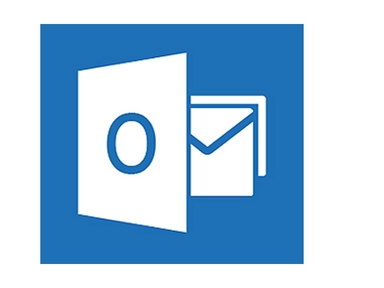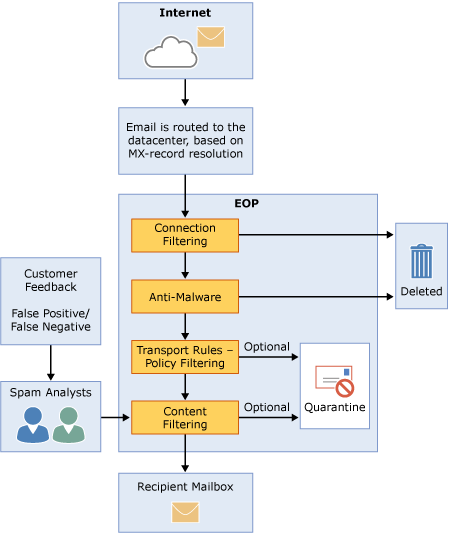Snds
How accurate are reports?
One of the big topics of discussion in various deliverability circles is the problems many places are seeing with delivery to Microsoft properties. One of the challenges is that Microsoft seems to be happy with how their filters are working, while senders are seeing vastly different data. I started thinking about reporting, how we generate reports and how do we know the reports are correct.
Read MoreOATH and Microsoft updates
 I’ve seen multiple people asking questions about what’s going to happen with the Yahoo and AOL FBLs after the transition to the new Oath infrastructure. The most current information we have says that the AOL FBL (IP based) is going away. This FBL is handled by the AOL infrastructure. As AOL users are moved to the new infrastructure any complaints based on their actions will come through the Yahoo complaint feedback loop (CFL). The Yahoo CFL is domain based. Anyone who has not signed up for the Yahoo CFL should do so.
I’ve seen multiple people asking questions about what’s going to happen with the Yahoo and AOL FBLs after the transition to the new Oath infrastructure. The most current information we have says that the AOL FBL (IP based) is going away. This FBL is handled by the AOL infrastructure. As AOL users are moved to the new infrastructure any complaints based on their actions will come through the Yahoo complaint feedback loop (CFL). The Yahoo CFL is domain based. Anyone who has not signed up for the Yahoo CFL should do so.
When registering you will need each domain and the selectors you’re planning on using. Yahoo will send an email with a confirmation link that needs to be clicked on within a short period of time in order to activate the FBL. Microsoft’s SNDS program had an outage at the end of last week. That’s been fixed, but the missing data will not be back populated into the system. This has happened a couple times in the past. It seems the system gets a live feed of data. If, for some reason, the data is interrupted, then it’s gone and doesn’t get populated.
Microsoft’s SNDS program had an outage at the end of last week. That’s been fixed, but the missing data will not be back populated into the system. This has happened a couple times in the past. It seems the system gets a live feed of data. If, for some reason, the data is interrupted, then it’s gone and doesn’t get populated.
SNDS issues and new Gmail
A bunch of folks reported problems with Microsoft’s SNDS page earlier today. This afternoon, our friendly Microsoft rep told the mailop mailing list that it should be fixed. If you see problems again, you can report it to mailop or your ESP and the message will get shared to the folks who can fix it.
The other big thing that happened today was Gmail rolled out their new inbox layout.
It’s… nice. I’ll be honest, I am not a big gmail user and have never been a huge fan. I got my first account way-back-during-the-beta. I used it to handle some of my mailing list mail. I could never work out how to get it to stop breaking threads by deciding to put some mail into the junk folder. I just gave up and went back to my shell with procmail (now sieve) scripts. I still have a couple lists routed to my gmail account, and the filtering is much improved – I can at least tell it to never bulk folder certain email.
The feature I’m really interested in is the confidential, expiring email. I’m interested in how that’s going to work with non-Gmail accounts. Within Gmail makes perfect sense, but I don’t think Gmail can control mail once it’s off their system.
My best guess is that Gmail will end up sending some type of secure link to recipients using non-Gmail mail servers. The message itself will stay inside Google and recipients will only be able to view mail through the web. That’s how the vast majority of secure mail systems work.
If anyone has the secure message already, feel free to send me a secure message. I’ll report back as to how it works.
Microsoft deprecating SmartScreen filters
At the beginning of the month Microsoft announced that they were deprecating the SmartScreen filters used by the desktop Microsoft mail clients. These are the filters used in Exchange and various version of Outlook mail. This is yet further consolidation of spam filtering between the Microsoft free webmail domains, Office365 hosted domains and self hosted Exchange servers. The online services (hotmail.com, outlook.com, Office365, live.com, etc) have been using these filters for a while. The big change now is that they’re being pushed down to Exchange and Outlook users not hosted on the Microsoft site.
EOP was developed for Outlook.com (and friends) as well as Office365 users. From Microsoft’s description, it sounds like the type of machine learning engine that many providers are moving to.
Microsoft has published quite a bit of information about these filters and how they work on their website. One of the best places to start is the Anti-spam Protection FAQ. Something senders should pay attention to is the final question on that page: “What are a set of best outbound mailing practices that will ensure that my mail is delivered?” Those are all things deliverability folks recommend for good inbox delivery.
Poking around looking at the links and descriptions, there is a host of great information about spam filtering at Microsoft and how it works.
A page of note is their Exchange Online Protection Overview. This describes the EOP process and how the filters work.
SNDS News
A number of people have mentioned over the last week or so that they’re seeing a lot of outages, failures and general ickiness with SNDS. I contacted Microsoft and asked about it. SNDS has been undergoing some upgrades and improvements and the outages were not intended to be end user visible. They’re going to keep a closer eye on things, while they finish the upgrades.
The good news in all of this is that SNDS is being upgraded and maintained. SNDS is still a functioning part of the Microsoft infrastructure, and this is good news for anyone who uses it as a data source.
Handling SNDS requests
I’ve been working with a new client on getting them signed up for FBLs, whitelists and other sorts of monitoring. One of the places I recommended to them was signing up for the Hotmail Smart Network Data Services (SNDS) program. It’s been a while since I’ve gone through the process, so I decided to sign up our network space to give up to date instructions from to clients.
As part of the process, Microsoft confirms the request with the network owner. This is smart, it prevents the wrong people from getting access to delivery data. They use public records (ARIN and IP Whois data) to figure out the “network owner” and send an email to that person. In my case, the mail was sent to a role account at Hurricane Electric (he.net).
I asked for access, filling in “this is Laura from Word to the Wise and I am looking for access to our space.” The email address in the request was my @hotmail.com address. A few minutes later I checked my inbox to find an email from he.net.
SNDS is back
For years now, Microsoft has maintained Smart Network Data Services (SNDS) for anyone sending mail to Hotmail/Outlook/Live.com. This is a great way for anyone responsible for an IP sending mail to hotmail to monitor what traffic Hotmail is seeing from that IP address.
This morning I got up to a number of people complaining that logins were failing on the website and the API was down. I contacted the person behind SNDS and they confirmed there was a problem and they were fixing it.
Sometime this afternoon it was possible to login to the SNDS interface again, so it looks like they did fix it.
A bit of a warning, though, don’t expect to see any of the data from the last few days. There seems to be something with SNDS that means that when the service is down data isn’t collected or available. In the past when there have been problems, older data was not populated when the service came back.